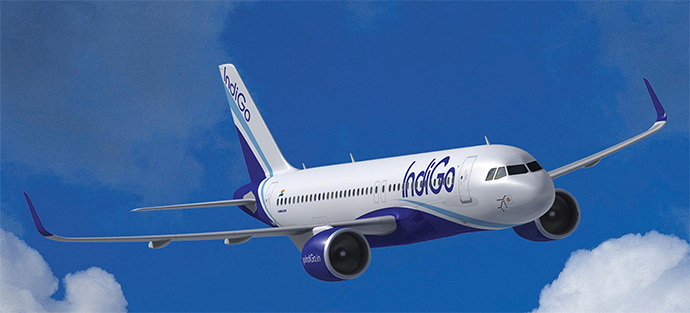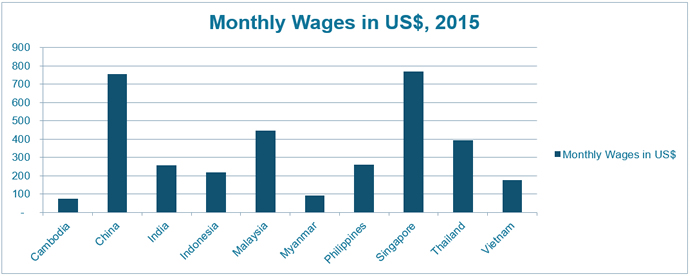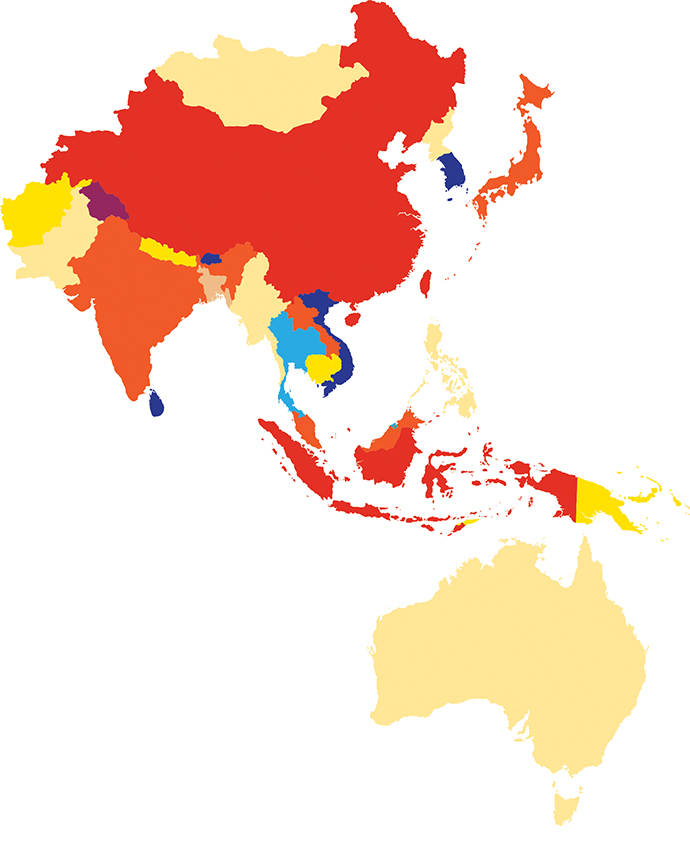Global manufacturers have overlooked investment opportunities in South Asia in favor of China and ASEAN for decades. Over US$3.4 trillion in capital has poured into East and Southeast Asia since 1995, much of it in manufacturing. With rising costs in China and improving operating conditions, however, South Asia is poised to find itself on the short-lists of global manufacturing companies seeking to enter a growing regional market as well as manage rising costs in East and Southeast Asia.
The UN’s World Investment Report 2015 noted that FDI into South Asia — including India, Sri Lanka and Bangladesh — grew by 16 percent to $41 billion between 2013 and 2014, while East and Southeast Asia increased by 9 percent during the same period. India ranked ninth worldwide in terms of FDI inflow. Low labor costs, investment liberalization, a skilled English speaking workforce and a consumer base of over 1.65 billion people (23 percent of the world’s population) make South Asia an attractive destination not only for the information technology-enabled service (ITeS) industries it has long attracted, but also for manufacturing.
Selected Major FDI Projects in South Asia, 2015
| Company | Country of Origin | Country of Investment | Investment (US$mil.) | Comments |
|---|---|---|---|---|
| USA | India | 235 | Setting up a new campus in Hyderabad with focus on – Google Education, Google Fibre broadband services and Street View. | |
| Airbus | France | India | 2,000 | Manufacturing of metallic components |
| Boeing | USA | India | – | R&D Centre in Bangalore with a focus on aerodynamics, Information Technology, modelling, simulation, materials and manufacturing technologies |
| Bosch | Germany | India | 101 | Expansion of home appliances manufacturing |
| BrightSKY | USA | India | 78 | Manufacturing 4G devices, Light Emitting Diodes (LEDs) light bulbs and telecom products |
| Carlysle Group | USA | India | 500 | India-focused upstream oil and gas – Magna Energy Ltd |
| Dalian Wanda Group | China | India | 10,000 | Constructing retail properties and developing industrial townships over the next 10 years |
| DE Shaw | USA | India | 200 | DE Shaw, in association with Blackstone, will invest in Hyderabad to set up a facility to provide software services for post-trade activities of asset management companies |
| Foxconn Technology | Taiwan | India | 20,000 | JV with Japan’s Softbank and Bharti Enterprises to invest US$20 billion in the renewable energy sector
Foxconn has also announced it will establish 10-12 facilities in India including data centres and factories by 2020 |
| GE | USA | India | 200 | Further investments in India’s rail, power and healthcare sectors |
| Honda | Japan | India | 60 | Expansion of its passenger car production facility in Tapukara, Rajasthan |
| Hyundai | South Korea | India | 800 | Setting up 3 data centres in Mumbai, Pune and Chennai |
| Starbucks | USA | India | – | Increase outlets across Indian metros and Tier 1 cities |
| Sun Edison | USA | India | 15,000 | Investment over next 8-10 years |
| Suzuki | Japan | India | 1,300 | Suzuki Motor started construction of a manufacturing plant in Gujarat and plans to supply vehicles made at the factory to local unit Maruti Suzuki |
| USA | India | – | R&D in Bangalore | |
| Volkswagen | Germany | India | 250 | Manufacturing of passenger cars |
| Warburg Pincus | USA | India | 133 | Investing in Indian logistics solutions provider Ecom Express |
| Yamaha | Japan | India | 250 | Manufacturing facility on the outskirts of Chennai making two wheelers |
South Asia boasts some of the lowest minimum monthly wages in the world. The minimum wage in Bangladesh, Sri Lanka and Nepal average about $75 per month, while India is $135. Consistently low wages and the availability of an English-speaking workforce have drawn service companies to the subcontinent for the last two decades. Now these same low wages, language skills and a large labor force are drawing the attention of manufacturers looking of the next low-cost destination with a large supply of labor that might replace China.
Unprecedented Reforms in India
While labor supply and some of the lowest costs in Asia are drawing attention; the historical difficulty of doing business in the region has always caused investors to think twice. According to the World Bank’s Doing Business report, India currently ranks a dismal 134 out of 189 economies. Red tape, a lumbering bureaucracy, difficulty in acquiring land, corruption, unclear tax laws and regulations detract from India’s desirability as a low-labor-cost location. Frequent power shortages, insufficient water supply and other utility constraints, as well as relatively poor physical infrastructure including roads, rail, ports and airports, raise costs and cause delays, which in combination, offset some of the region’s labor cost advantages.
The Indian government is well aware of these constraints. Prime Minister Narendra Modi is pushing reform policies and practices to promote the government’s ‘Make in India’ and ‘Digital India’ programs and taking steps to improve its Doing Business ranking. The central government has insisted that each of the Indian states provide a business-friendly environment, and the Indian Commerce Department has been tasked to rank India’s 29 states on 98 parameters on ease of doing business. The first budget of the ruling Bharatiya Janata Party (BJP) government opened the construction, rail and the insurance sectors to FDI for the first time.

Additional reforms are being taken quickly to remove uncertainties surrounding land acquisition, implementation of Goods and Service Taxes (GST) and to improve the reliability of electricity, water and transport systems. India’s Department of Industrial Policy and Promotion (DIPP) reported that total FDI inflows soared by 24.5 percent to $44.9 billion in 2015 compared to $34 billion in FY2014. While a majority of this investment was in the infrastructure and services sector, companies are taking the first steps at looking beyond manufacturing in India only for domestic consumption.
Through its ‘Digital India’ campaign, the government aims to make governance more accountable and transparent while assuring data privacy and security. In September 2015, Prime Minister Modi visited the US and met with the founders and CEOs of leading American tech firms including: Adobe, Apple, Cisco, Facebook, Google, Microsoft Qualcomm, Tesla, Uber and 350 others. These companies are eyeing significant investments in India to tap into one of the largest pools of highly skilled English speaking engineers in the world.
India also has some of the fastest growing start-ups including companies like Flipkart, Hike, Ola cabs, Snapdeal and Zomato, which have achieved Unicorn status within a couple of years. SoftBank has made a series of investments totaling about $830 million in Indian on-line companies including Snapdeal and Ola Cabs.
Progress in Sri Lanka and Bangladesh
The end of Sri Lanka’s civil war in 2009 resulted in a “peace dividend” that gave the country an opportunity to rebuild its economy and infrastructure. The government set lofty goals for creating free zones and developing economic hubs in the power, seaports, aeronautics, commerce and education sectors. With a relatively open investment climate, moderately stable monetary policy, improving quality of its physical infrastructure, geographical proximity to India and Southeast Asia and English-speaking labor, Sri Lanka is an attractive location for investment. China has been one of the major investors in Sri Lanka, building expressways, ports and an airport over the past four years. In manufacturing, firms in the garment and textile sectors are drawn by very competitive wages and an investment environment that is less complex than neighboring India. The country also continues to attract investment from firms in the ITeS sectors.

Compared to India and Bangladesh, Sri Lanka has a more favorable regulatory environment for business. The country is seeing a growing number of entrepreneurs returning home from other developed countries to take advantage of the more stable political environment. With President Sri Maithripala Sirisena coming into power in January 2015, the country has begun focusing on attracting investments from Western countries as well.
In Bangladesh, the garment sector employs over 4.2 million workers and accounts for $20 billion of exports, primarily to the EU, US and Canada. After the tragic collapse of the Rana Plaza in which over 1,100 lives were lost in April 2013, as well as the fatal fire at Tazreen Fashions that same year, the government implemented sorely needed safety and compliance regulations. These actions, as well as concerted efforts by local industry, have rebuilt the confidence of global buyers. To date, about 50 percent of 2,904 ready-made garment factories have been inspected by the authorities.
The Bangladesh government has forecast year-end 2015 growth of 6.7 percent, while the IMF expects 6.1 percent. Two Indian companies, Adani Power and Reliance Power, signed deals worth over $4.5 billion with the state-run Bangladesh Power Development Board (BPDB) to develop six power plant units producing 4,600 MW of electricity. The Chinese company Orion Holdings is building a garments village in Munshiganj, to the south of Dhaka. Recent discoveries of giant natural gas fields in the Brahmaphutra Delta in the Bay of Bengal have prompted Chevron to invest $500 million in the Bibiyana Expansion Project. It is set to invest another $650 million in the local state-owned oil company Petrobangla to exploit these exceptional opportunities, which will not only make Bangladesh energy-self-sufficient, but attract investors requiring natural gas for power or natural gas liquids for petrochemical feedstocks.
Economic Statistics, 2015
| Population (2014, millions) | GDP (US$ bn at market exchange rate) | GDP per capita (US$) | Exports of Goods and Services (2014, US$ bn) | FDI (2014, US$ bn) | |
|---|---|---|---|---|---|
| India | 1.267 | 2,048 | 1,631 | 342.5 | 34 |
| Bangladesh | 159 | 187 | 1,097 | 31.2 | 1.5 |
| Sri Lanka | 21 | 72 | 3,631 | 11.9 | 1 |
| Nepal | 28 | 20 | 698 | 1.15 | 0.03 |
Over the last several years, the governments in South Asia have consistently worked on creating positive economic policies and integrating their economies with the rest of the world as never before. Governments are actively luring global investors with tax incentives, dedicated power and water supply arrangements, exemption of stamp duty for land acquisition, value-added-tax (VAT) refunds, reduced electricity charges and other incentives. As operating conditions and ease of doing business improve across the subcontinent, South Asia is on the path to having improved operating conditions coupled with low labor costs and abundant supply of English-speaking labor. This balance of operating conditions and costs will put South Asian locations on the global manufacturing location short-list map.
Nalin Patel is Country Manager – India and Sreehari Marar is a Senior Research Analyst in the India office of Tractus Asia Limited, a leading FDI advisory and site location strategy firm in Asia.
